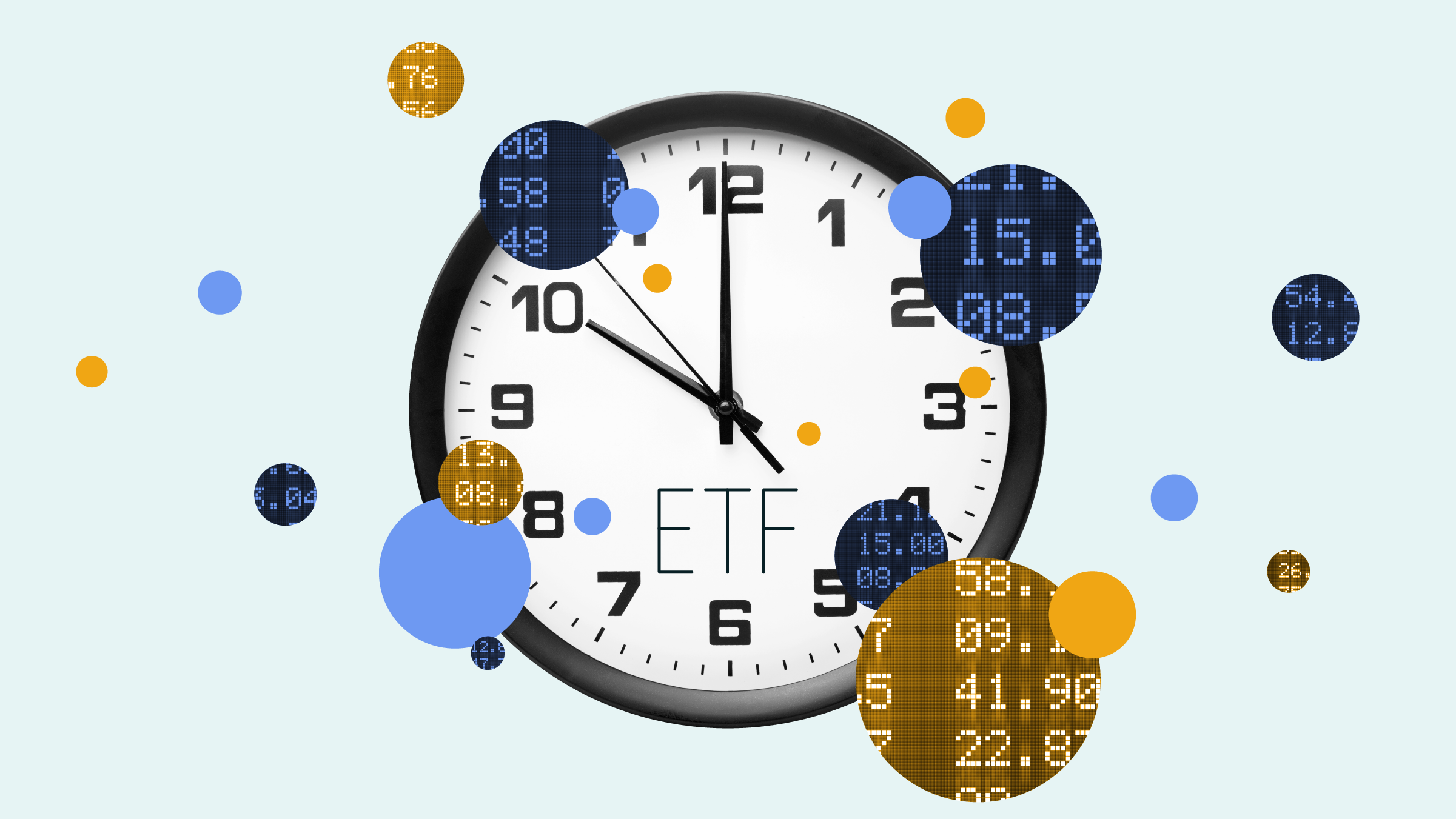Rolle im Portfolio
The iShares Emerging Markets Local Government Bond UCITS ETF offers investors exposure to emerging markets government debt from 14 countries in local currency.
The search for higher yield and capital gains vis-à-vis developed bond markets remains the key selling point of emerging market government debt and specifically those denominated in local currency. It is recommended that investors deploy this ETF as a yield-enhancing satellite holding to complement lower-risk core developed market fixed income building blocks. Additionally, investors have also been attracted to EM debt by virtue of its low correlation with traditional (e.g. developed economies) fixed income investments.
Unsurprisingly, the higher expected returns associated with local-currency debt, are accompanied by a higher risk. Generally speaking, emerging markets are expected to be less credit worthy than their developed counterparts.
This ETF is a monthly-dividend-distributing vehicle; hence foreign exchange considerations are to have a regular impact on the expected income stream. Put another way, investors investing in this fund are taking a tactical bet on emerging market currencies.
Despite the appearance of diversification, countries within this ETF have significant systemic risk. Historically, nervy investors in emerging markets have withdrawn investment indiscriminately across the sector as market confidence falls. Under these circumstances, local-currency debt is likely to be hit harder than its USD-denominated equivalent due to its higher perceived risk.
As per country risk, the ETF does not discriminate between geographical areas; thus making it an appropriate vehicle for those seeking a broad exposure, but not for those wanting to target a specific area or country. This is crucial, as not all emerging markets are alike; country specific factors such as current account balance are likely to see one country perform dramatically differently from another over the long-run.
This ETF has a moderately long duration (~5%), which adds a further layer of performance risk ultimately dependant on the monetary policy of each individual nation. This means it is vulnerable to proportionally higher capital losses when local interest rates are raised. In this circumstance the impact on this ETF is likely to be limited, no country currently represents more than 10% of total exposure.
Fundamentale Analyse
Historically, EM government debt has been mostly issued in USD or other developed nation currencies to make it more palatable to global investors. Despite this, recent years have seen growth in the issuance of local currency bonds.
Emerging markets (EM) are routinely described as one of the main financial markets success stories of the last two decades. Structural changes to the way these economies are governed have facilitated large capital inflows, in turn leading to a significant shift in international investors’ asset allocation trends. EM exposure is now part and parcel of most investment portfolios, with investors lured by comparatively high returns and a perception of diminished risk.
However, the strong performance of EM government bonds over the past decades took a turn for the worse in 2013. Key EM countries are now showing signs of growth slowdown. Furthermore, social protests in countries such as Turkey and Brazil, not to mention the developments in Ukraine and Russia, have served to remind to investors that political risk has not disappeared from EM.
In an attempt to protect against potential short-term speculative capital inflows many EM countries have introduced ad-hoc measures, such as minimum investment periods, maximum levels of foreign equity ownership and FDI tax. These additional costs are ultimately borne by the end investor and are often cited as a barrier to entry. Looking forward, additional policy moves of this kind cannot be excluded. Adding to these domestic worries, EM valuations continue to be negatively affected by the US Fed QE tapering. These developments have severely undermined the notion of a decoupling between EM and developed economies.
In a way, the events since 2013 have exposed one of the key weaknesses of the rationale for investing in EM. The success of most emerging market economies has been predicated on an export-oriented model whereby they became the suppliers of choice to consumption-driven developed partners. As the latter struggled under the burden of public and private debt, EM economies have had little option but to incentivise internal sources of growth. However, in order to fully incentivise local consumption, EM economies may have to develop and/or considerably extend publicly-funded social safety nets. This, for instance, was one of the key reasons behind the social protests in Brazil. Not all EM countries are the same; but any move to provide for extended social programmes (e.g. health, education) may lead to increased government expenditure in the future. This, in turn, could weigh on EM government bond valuations, not least as international investment flows are now being reallocated towards the recovering developing economies.
Indexkonstruktion
The Barclays Emerging Markets Local Currency Core Government Bond index measures the performance of the 15 most accessible local-currency debt issuers by emerging market countries. To be eligible for inclusion into the index, bonds must have a minimum outstanding amount which varies from country to country (e.g 20bn Russian Rubles or 200bn Hungarian Forint) and at least one year until final maturity. A full list of outstanding currency minimums is available from the Barclays website. Barclays uses a capped weighting methodology which limits country exposure to a maximum of 10% and redistributes the excess market value index-wide on a pro rata basis. The index is reviewed and rebalanced on the last calendar day of each month. Emerging market countries are those defined by the IMF and the World Bank (e.g. Russia, South Africa, Mexico, Turkey and Brazil). Additional countries that bond investors classify as EM due to factors such as investability concerns, the presence of capital controls, and/or geographic considerations may also be included on the list and are also reviewed on an annual basis.
Fondskonstruktion
iShares uses physical replication to track the performance of the Barclays emerging markets local currency government core bond index. iShares uses sampling techniques to achieve this return. Under this arrangement, iShares attempts to match the return, duration and geographical exposure of the index without necessarily holding all index constituents at the exact weights specified by the index. In practice, the securities held by the fund rarely stray too far from those dictated by the index. Dividend distribution is done semi-annually, with historical data showing a June-December payment pattern. iShares may engage in securities lending in order to optimise the ETF’s tracking performance, although does not currently do so for this fund. BlackRock acts as investment manager on behalf of iShares. The amount of securities that can be lent out is capped to 50% per fund, although in most cases it stands well below that level. Lending operations are hedged by taking UCITS-approved collateral greater than the loan value and by revaluing loans and collateral on a daily basis. The collateral is held in a ringfenced account by a third party custodian. The degree of overcollateralisation is a function of the assets provided as collateral, but typically ranges from 102.5% to 112%. Lending revenue is split 60/40 between the ETF and BlackRock, respectively. The maturity of the fund’s holdings is reflective of the issuance of local-currency EM debt. Around 45% of holdings fall within the 3-10 year maturity range giving the fund a duration around the five year mark. Geographically, the fund has largest single country exposure to Russia, South Africa Mexico, Turkey and Brazil which each maintain between 9% and 10% of holdings. These are followed by Malaysia (~9%), Indonesia (~9%) and Poland (~9%).
Gebühren
iShares levies a total expense ratio (TER) of ETF is 0.50% which is low-end of the 0.50-0.60% TER range for ETFs offering exposure to the local-currency emerging market government bond market. It should be remembered that there are additional, investor-specific costs associated with trading the ETF, such as bid/offer spreads and brokerage commissions, which should be factored into an investment decision. There are also rebalancing costs whenever the index changes composition.
Alternativen
Of the three, the one espousing the highest AUM as of this writing is the SPDR Barclays Emerging Markets Local Currency Government Bond ETF. It is physically replicated and charges a TER of 0.55%. It tracks a tracks a different sub-set of the Barclays EM local currency government benchmark, namely the “liquid” index, which measures the performance of EM bonds with minimum outstanding of at least USD 1bn (or equivalent in local currency).
Further down the AUM scale we find the the PIMCO Emerging Markets Advantage Local Currency Bond Source ETF. Also physically replicated, it charges a TER 0.60% and tracks the performance of a PIMCO in-house produced index with two key features: a) it is GDP-weighted, and b) it provides exposure through non-deliverable currency forwards to China and India, which are not part of the Barclays indices.
Another alternative is the Lyxor Emerging Markets Local Currency Bond UCITS ETF. It is physically replicated and tracks the JP Morgan GBI-EM Global Diversified Index. It charges a TER of 0.55%.

















